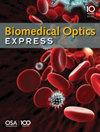基于类激活图的白细胞图像弱监督语义分割。
IF 2.9
2区 医学
Q2 BIOCHEMICAL RESEARCH METHODS
引用次数: 0
摘要
白细胞是人体防御系统的重要组成部分,准确分割白细胞图像是实现自动检测的关键一步。现有的白细胞图像分割方法大多依赖于全监督语义分割(FSSS)和大量像素级注释,耗时耗力。为解决这一问题,本文提出了一种利用改进的类激活图(CAM)进行白细胞图像弱监督语义分割(WSSS)的方法。首先,为了缓解白细胞与背景之间的模糊边界问题,本文采用了预处理技术来提高图像质量。其次,加入注意力机制,通过改善局部和全局特征的匹配来完善生成的 CAM。利用随机游走、密集条件随机场和洞填充来获得最终的伪分割标签。最后,利用伪分割标签训练出一个完全受监督的分割网络。该方法在 BCCD 和 TMAMD 数据集上进行了评估。实验结果表明,利用该方法生成的伪分割注释,可以训练出尽可能接近 FSSS 的 UNet。该方法在实现白细胞图像 WSSS 的同时,有效降低了人工标注成本。本文章由计算机程序翻译,如有差异,请以英文原文为准。
Weakly supervised semantic segmentation of leukocyte images based on class activation maps.
Leukocytes are an essential component of the human defense system, accurate segmentation of leukocyte images is a crucial step towards automating detection. Most existing methods for leukocyte images segmentation relied on fully supervised semantic segmentation (FSSS) with extensive pixel-level annotations, which are time-consuming and labor-intensive. To address this issue, this paper proposes a weakly supervised semantic segmentation (WSSS) approach for leukocyte images utilizing improved class activation maps (CAMs). Firstly, to alleviate ambiguous boundary problem between leukocytes and background, preprocessing technique is employed to enhance the image quality. Secondly, attention mechanism is added to refine the CAMs generated by improving the matching of local and global features. Random walks, dense conditional random fields and hole filling were leveraged to obtain final pseudo-segmentation labels. Finally, a fully supervised segmentation network is trained with pseudo-segmentation labels. The method is evaluated on BCCD and TMAMD datasets. Experimental results demonstrate that by employing the pseudo segmentation annotations generated through this method can be utilized to train UNet as close as possible to FSSS. This method effectively reduces manual annotation cost while achieving WSSS of leukocyte images.
求助全文
通过发布文献求助,成功后即可免费获取论文全文。
去求助
来源期刊

Biomedical optics express
BIOCHEMICAL RESEARCH METHODS-OPTICS
CiteScore
6.80
自引率
11.80%
发文量
633
审稿时长
1 months
期刊介绍:
The journal''s scope encompasses fundamental research, technology development, biomedical studies and clinical applications. BOEx focuses on the leading edge topics in the field, including:
Tissue optics and spectroscopy
Novel microscopies
Optical coherence tomography
Diffuse and fluorescence tomography
Photoacoustic and multimodal imaging
Molecular imaging and therapies
Nanophotonic biosensing
Optical biophysics/photobiology
Microfluidic optical devices
Vision research.
 求助内容:
求助内容: 应助结果提醒方式:
应助结果提醒方式:


